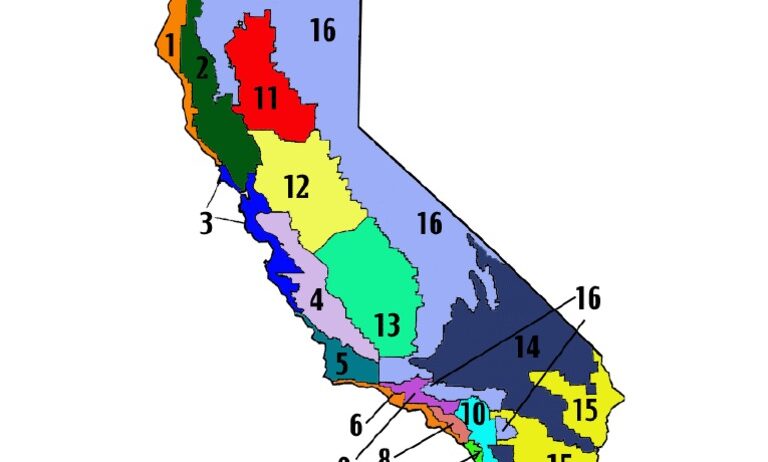California, renowned for its diverse geography and ecosystems, is characterized by a plethora of climate zones. This multifaceted climatic reality is shaped by various factors, including its topography, latitude, and proximity to the Pacific Ocean. Understanding California’s climate zones is crucial not merely for meteorological interest but also for agricultural planning, urban development, and environmental conservation.
At a fundamental level, California is situated within the Mediterranean climate zone, typically denoted by hot, dry summers and mild, wet winters. However, this is merely the surface of a much deeper climatic tapestry. The state hosts different climate types, including desert, subtropical, and even alpine climates, owing to elevation variances and geographical isolation.
To dissect the complex climate of California, it is essential to recognize several key climate zones:
1. Mediterranean Climate Zone
The coastal regions from San Diego to Mendocino are enveloped in a Mediterranean climate. Characterized by warm, dry summers and mild, wet winters, this zone supports vineyards and citrus groves that thrive under these temperate conditions. Coastal fog is a common feature, providing moisture during the dry summer months, which significantly benefits agriculture.
2. Desert Climate Zone
Moving inland from the coastal areas, one encounters the arid desert climate found in regions such as the Mojave and Sonoran Deserts. These areas experience extreme temperature fluctuations between day and night, with summer daytime highs exceeding 100°F. Rainfall is sparse, averaging less than 10 inches annually. The local flora and fauna have adapted to extreme dryness, with species such as cacti and desert shrubs dominating the landscape.
3. Steppe Climate Zone
Transitioning from the desert, California also incorporates steppe or semi-arid climates, especially in regions such as the Central Valley. This zone experiences more precipitation than true deserts but still falls short of the requirements to be classified as a humid region. The Central Valley is a prime agricultural hub, producing a significant portion of the nation’s fruits, vegetables, and nuts. The interplay between irrigation and varying rainfall patterns is crucial here.
4. Mountain Climate Zone
As one ascends into California’s mountainous regions, notably the Sierra Nevada, the climate shifts dramatically. The mountain climate is marked by cooler temperatures and increased precipitation, often falling as snow during winter months. Within these elevations, microclimates exist, leading to various ecological niches. This climate zone is integral for watershed management, as it influences the water supply for the entire state.
5. Subtropical Climate Zone
Parts of Southern California, particularly along the coast, can also be classified as having a subtropical climate. Inland areas close to Los Angeles experience hotter temperatures and higher humidity. This zone supports lush, verdant landscapes and diverse ecosystems, contrasting sharply with the drier regions just a short distance away. Iconic species such as palm trees and succulents thrive here.
Moreover, the impact of climate change is becoming increasingly pronounced across these various climate zones. Rising temperatures, shifting precipitation patterns, and more frequent extreme weather events pose significant challenges. Agriculture faces particularly dire consequences; for instance, changes in rainfall patterns affect crop yields, while rising temperatures threaten critical water resources.
Water management is a pressing issue exacerbated by the state’s complex climate zones. Understanding the interplay between these zones enables better strategies for water conservation. Innovative techniques such as rainwater harvesting and drought-resistant crops are emerging as essential tools in California’s environmental arsenal.
The urban heat island effect is another concern, particularly in densely populated areas like Los Angeles. The localization of heat through concrete and asphalt leads to elevated temperatures, further stressing local vegetation and increasing energy demands for cooling. Urban planning must incorporate green spaces and sustainable practices to combat these adverse effects.
Biodiversity within California’s climate zones is also at risk. Species that are uniquely adapted to specific climatic conditions may face extinction as their habitats transform due to climate change. Conservation efforts must be bolstered to safeguard these vulnerable ecosystems by protecting their natural habitats and the intricate balances that exist within them.
In summary, California’s climate is a complex mosaic of various zones, each with its distinct characteristics and challenges. From the Mediterranean climate supporting agricultural abundance to the arid deserts and majestic mountains, the state’s diverse climates contribute uniquely to its ecological richness. Understanding these zones is paramount for effective environmental stewardship. As the state grapples with the effects of climate change, leveraging the knowledge of these climatic distinctions will be essential for future resilience and sustainability.







